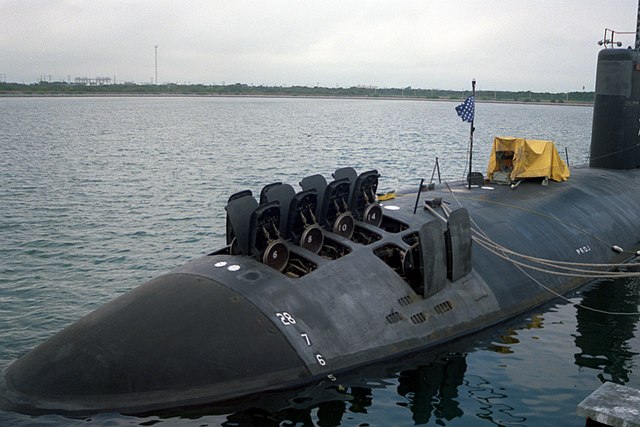Ehime Maru and USS Greeneville collision
On 9 February 2001, about nine nautical miles south of Oahu, Hawaii, in the Pacific Ocean, the United States Navy (USN) Los Angeles-class submarine USS Greeneville (SSN-772) collided with the Japanese fishery high-school training ship Ehime Maru (えひめ丸) from Ehime Prefecture. In a demonstration for some VIP civilian visitors, Greeneville performed an emergency ballast blow surfacing maneuver. As the submarine shot to the surface, she struck Ehime Maru. Within ten minutes of the collision, Ehime Maru sank. Nine of the thirty-five people aboard were killed: four high school students, two teachers, and three crew members.
The Japanese fishery high-school training ship Ehime Maru
Greeneville transits the channel between Pearl Harbor and the Pacific Ocean.
Greeneville's AVSDU (center) and periscope (partly visible, right side)
Greeneville's sonar room
Los Angeles-class submarine
The Los Angeles class of submarines are nuclear-powered fast attack submarines (SSN) in service with the United States Navy. Also known as the 688 class after the hull number of lead vessel USS Los Angeles (SSN-688), 62 were built from 1972 to 1996, the latter 23 to an improved 688i standard. As of 2024, 24 of the Los Angeles class remain in commission—more than any other class in the world—and they account for almost half of the U.S. Navy's 50 fast attack submarines.
USS Los Angeles, lead boat of the class.
Crewmen monitor consoles at the diving station aboard a Los Angeles-class submarine
A portside bow view of the fore section of USS Santa Fe tied up at the pier in February 1994: The doors of the Mark 36 vertical launch system for the Tomahawk missiles are in the "open" position.
The aft end of the control room for USS Jefferson City in June 2009








